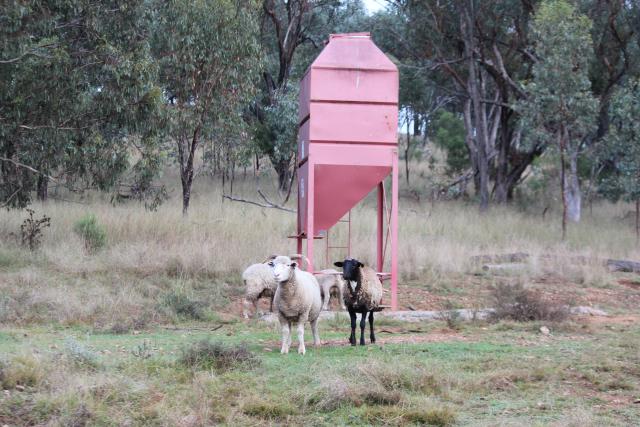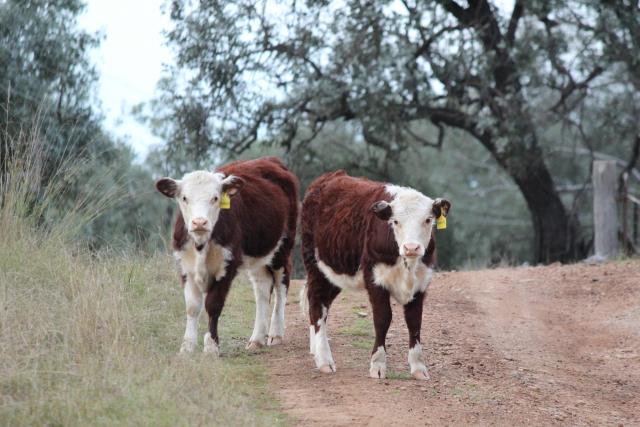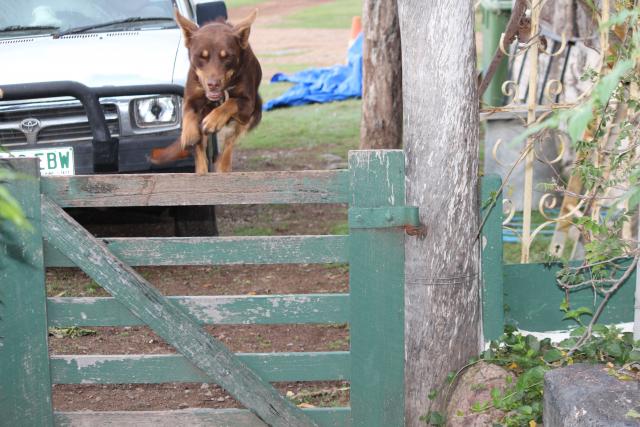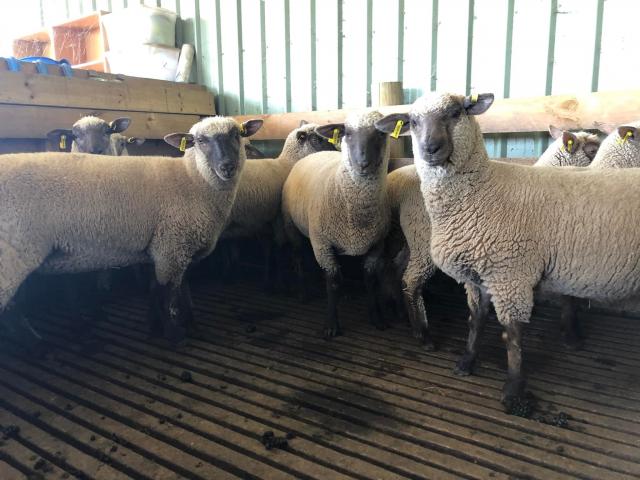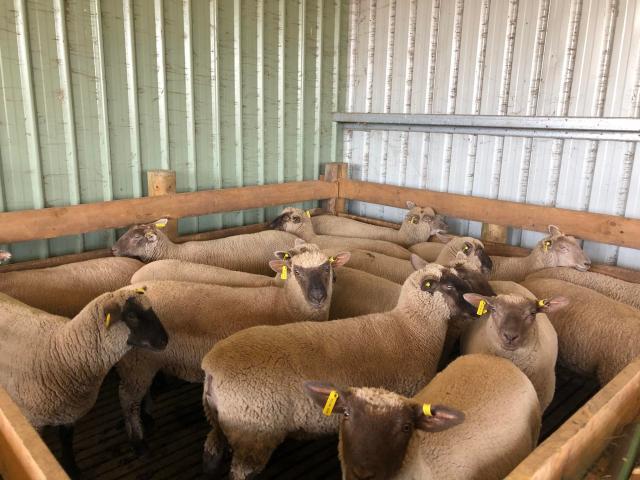By Judy Barnet, Ag Columnist
The start of the week saw me taking the long road to work with water over the bridge and part of the road on both sides washed away. It’s a good excuse to stop and get a cappuccino at Texas on the way through, and sometimes also a treat for morning tea!
As I write, it is 5 am Wednesday morning. I was up bright and early at 3.30 am (well maybe remove the bright and replace it with cold) to do a live podcast with the USA Livestock Conservancy for International Heritage Breeds Week. I was pretty nervous about this, public speaking is definitely a long way out of my comfort zone, but it all went reasonably smoothly. Listening to the replay though, I didn’t realise how many times I ummed and aahed!!! The conservancy in the USA faces much the same problems as we do in Australia – lack of government support, membership and volunteers; economic viability for slower-growing or lower-yielding breeds; small gene pools and access to rare breeds and new bloodlines etc; access to facilities, particularly abattoirs, that cater to small scale producers; lack of consumer understanding of the unique qualities of different breeds, so lack of willingness to pay more; the power of trends and branding in the commercial sector (e.g. the obsession with Angus); complexities of politics within societies and the need for volunteer labour.
And, of course, there are different issues for different species. For example, mechanisation taking the traditional work that draught horses were valued for. So few people wish to keep animals that cost a great deal to keep but don’t have a market to recoup costs. Health fears about fat impact the popularity of particular pig breeds. Intensification and scaling of poultry production resulting in absurdly cheap and hyperproductive animals that are so readily available and create expectations around “normal” laying capacity and production.
However, there is a small glimmer of hope. I received an email from the University of New England and Meat Livestock Australia (MLA) who are asking for breeders of foundation breeds of sheep to come forward and supply samples for genotyping. This enables MLA to keep a record of the different bloodlines of breeds in Australia.
Richie usually feeds the calves in the morning but I didn’t have to work this morning, so much to Dora’s delight she was able to participate in the morning feed up. She loves the calves and considers them her best friends. Sadly, the steer calves are heading off to the sale in a week. The Herefords, being heifers, will get a reprieve as they are growing nicely out in the paddock. I have considered keeping the heifers but the heartache from the last drought and having to sell my cows is always lurking in the back of my mind.
The auction is in full swing and I am gobsmacked by the bidding so far, with the lovely set of miniature cattle yards that the Stanthorpe Men’s Shed helped restore currently sitting at $410, well beyond our wildest dreams. I must admit I struggled a bit to get people on board to donate goods and services and at one stage thought I would have to go through my container and donate most of the goods myself if the auction was to happen. But persistence, a lot of phone calls and emails eventually resulted in some fantastic donations from some very generous sponsors!
I have put my application in to have a display of animals for this year’s Jumpers and Jazz Festival, which I believe will be situated down near the park. If I can find a shearer to shear one of the sheep on display, Judy from Warwick Spinners and Weavers has offered to spin the wool from this sheep as it is shorn. Please contact me if you would like to volunteer your shearing services!
Speaking of sheep, I thought I would tell you a bit about the South Suffolk breed this week. One of Australia’s oldest sheep studs is selling off a draught of thirty ewe lambs due to having received so little rain in the last six months. The ewes are crackers. Thanks to Willowdrive South Suffolk Stud for this history on their breed.
South Suffolk breeders in this country are indebted to George Gould (1865-1941) of Canterbury, New Zealand. George Gould had a Southdown Stud and in 1913 imported the first Suffolks into New Zealand. He believed that by crossing the Suffolk with the Southdown one could combine the best features of both breeds, ie. the leaner carcass of the Suffolk and the finer texture of the meat of the Southdown.
The cleaner face and legs of the Suffolk lift the progeny up out of the grass seeds and George always maintained that an open-faced sheep was a better “doing” sheep and constantly pushed this point in regard to cleaning up the faces of the pure Southdown breed as well as increasing their size.
Forty years after his death, the Southdown stud masters saw the wisdom of what he had said and have done just that.
By 1929 George Gould was crossing the two parental breeds both ways and found as Dr (now Sir John) Hammond of the School of Agriculture Cambridge University had said “that due to the genetic closeness of the parental breeds, there was not much likelihood of the splitting up of type’.
In 1940 The Council of The New Zealand Sheep Breeders Association accepted Mr Gould’s new breed of sheep (South Suffolk) into their flock book as an Appendix flock.
Taken from a letter to George Gould from Sir John Hammond, dated 28-3-1941. ‘Over here Suffolk/Southdown (South Suffolk) makes about the best carcass we can produce- it has the short thick hind legs of the Southdown with the thickness of lean meat of the Suffolk- one finds in these crosses few animals that contain too much fat in proportion to lean as sometimes occurs in the Southdown. The Suffolk/Southdown (South Suffolk) not only has the good conformation of the Southdown but also has rather more weight for age, which makes it a good commercial proposition.’
The first South Suffolks were imported into Australia in1946 by Mr C.H. Kennedy of Yooraling Stud, Cunderdin, W.A. By 1959 eight Australian studs were registered in the NZ flock book.
On September 23,1958 Mr S.W.Porter of Orford, Victoria, Mr G.C. Mackie, of Culcairn, NSW, Mr R.G.Ireland and Mr A.F. Clarke of Yankalilla, S.A.formed the Australian South Suffolk Sheep Society, which printed a flock book for the breed for 14 years prior to the amalgamation with the Australian Society of Breeders of British Sheep (ASBBS) in September 1972.
From the time of the formation of the Australian Society, the South Suffolk breed gradually took its place in Australia and has some of the top sires for the production of prime lambs that have the early maturing, long carcasses and short, thick hind legs demanded by both the producer and consumer alike.
The South Suffolk is noted for its easy lambing (small heads and shoulders well let in), hardiness at birth, prepotency, and its early maturity. South Suffolk lambs are uniform in quality.
South Suffolk rams possess great libido and seem to last more years which is a great plus for the commercial breeder. South Suffolk rams may be used on any breed of ewe and will even produce prime lambs from Merino ewes.
South Suffolks have been prominent in many carcass competitions where they have yielded up to 59 per cent cold dead weight of their live weight. South Suffolk sired lambs with their short fine fleece are known to be able to stand a check and still “come again” without having to be shorn, as is the case with the more open wooled breeds.

